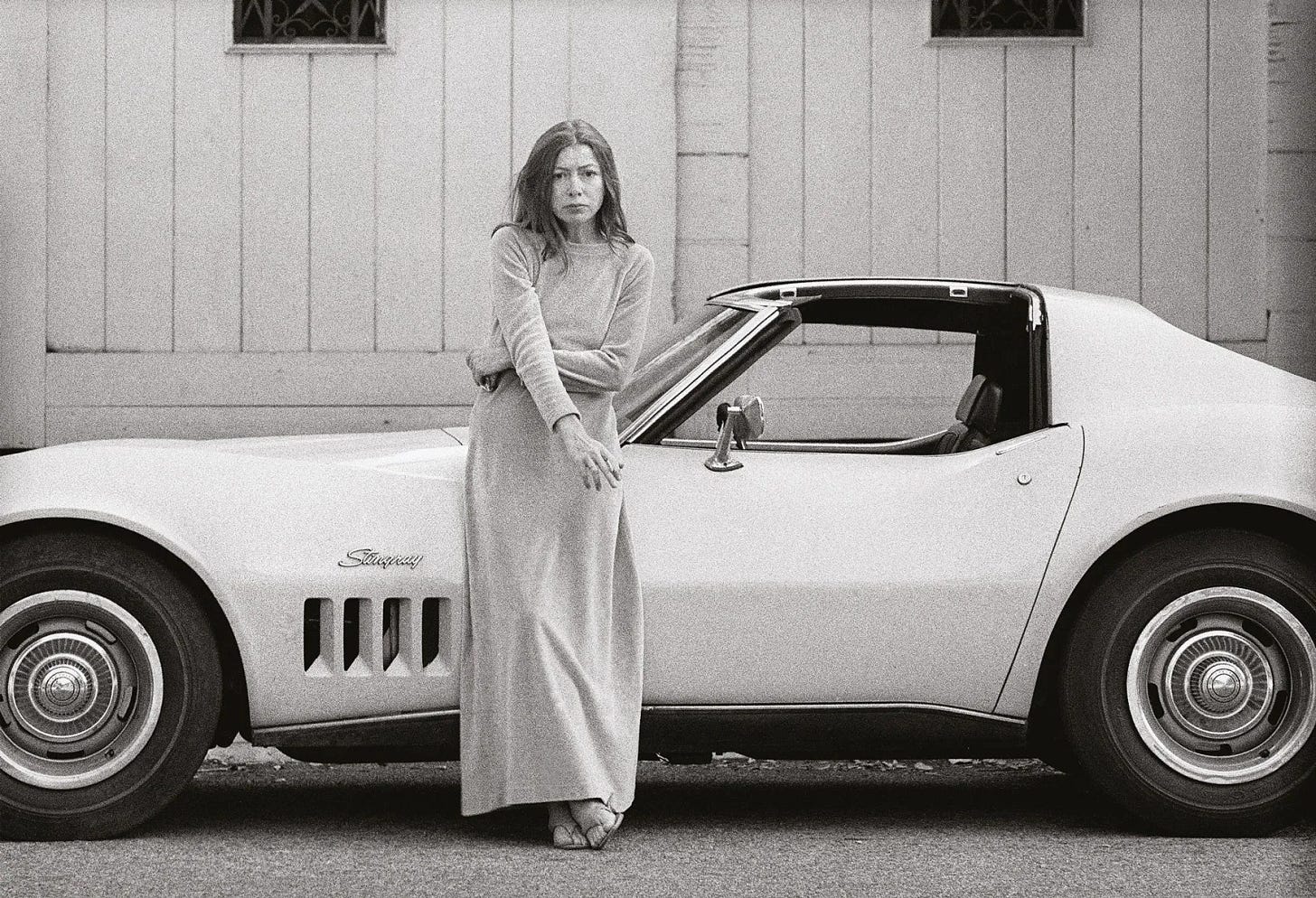
I’m going out west at the end of this week, and I can’t stop thinking about Joan Didion.
I’m not even going to California. I’m going to New Mexico. I have no evidence that Joan Didion ever stepped foot in New Mexico, but, for some reason, I associate her with the American West. It could associate the wide, open space her writing carved for the creative nonfiction/ new journalism world with the vastest part of the country. Or I could be an east-coaster with a limited concept of geography of the other side of the Mississippi and thinks the California deserts might as well be anywhere in the Southwest (I have a suspicion that it’s the latter…).
Regardless, as I pack for my trip, I can’t help but return to the packing list Didion taped onto her Hollywood closet while reporting in the late 60s and 70s. She includes this list in her 1979 book, The White Album.
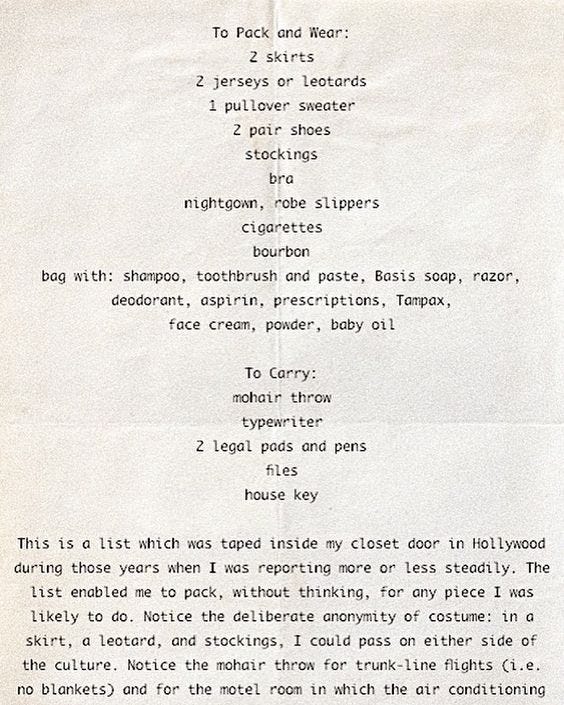
We can appreciate the simplicity, efficiency, and correctness of her packing list. She organizes her bags how I think most travelers should– separated by things you need while traveling and things you will need on arrival. We can also appreciate the honesty within her packing list– the bourbon for passing the time in the motel room sticks with me.
I’m thinking, however, about her focus on the “deliberate anonymity of costume.” She writes that with these basics– a skirt, leotard, and stockings– she could “pass on either side of the culture,” whether talking about counterculture on Haight-Ashbury or interviewing film executives.
While political or cultural associations may remain hidden within Didion’s clothing choices, there is no “anonymity” in her costume anymore. Joan Didion is a fashion icon. She’s no stranger to fashion– having worked for Vogue for her first job.
More than that, she’s a style icon. She proves it’s not about what you wear, but how you wear it. Her most famous looks– the white t-shirt, oversized black sunglasses, and long skirt– are simple but adopt a more intense level of coolness draped across her thin shoulders.
I mean– just look at these images! I’ve donned white tees and big sunglasses, but I’ve never come near to looking as natural and assured in the choice as Didion. I look like I’m wearing a costume (which is what I’m doing: dressing up like Didion).
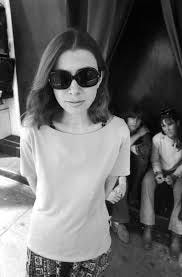
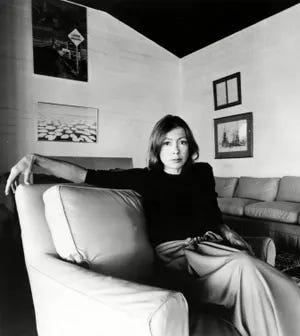
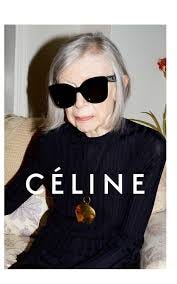
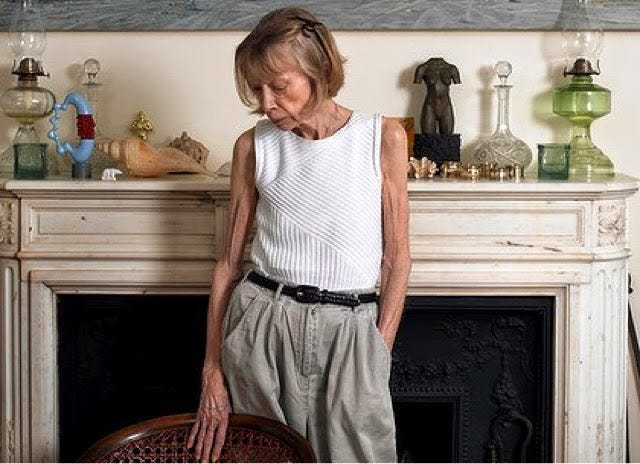
Didion is a style icon– but whose style icon is she?
In my creative writing classes, I often hear the term “writer’s writer,” a subjective term describing writers who are best known and most admired by other writers. I’m thinking about writers I only know about because I take creative writing classes and, when I bring them up to friends who don’t, I might as well be speaking a foreign language.
Joan Didion is a writer’s fashionista– not because she’s unbeknownst to the public (she was the face of Céline so she’s quite known), but because of the lesson writers can learn from her outfits.
Didion’s fashion appears natural because she dresses like her writing would. The versatility for any occasion or format, whether fiction, film, or essay. The stark colors like the series of images she presents in her essays. The precision like her prose, breaking through description to tell you what she knows and doesn’t know.
In a world where lifestyles, locations, and occupations appear as fashion trends– balletcore, cottagecore, and quiet luxury come to mind– there’s something special about fashioning a holistic appearance representing you. Yes, the leg warmers ballet dancers wear are cool, but I am not a ballerina. I would look like I wore a costume. If I took ballet classes or my writing did pirouettes on the page, leg warmers would no longer be a costume but speak to the way I lived and wrote.
I don’t mean to rail against trends or costumes. On the contrary, I think they are fun. Anyone who has ever come to my house knows I love a theme party, and I enjoy browning curated edits on influencers’ LTK.
To be a style icon, you have to dress the way you live and write. I want to look like Didion– be Didion, even– but I won’t look like she does in the images left behind by dressing like her. I will look more like her if I wear clothes that feel like me.
So I ask myself– what does my writing wear?




